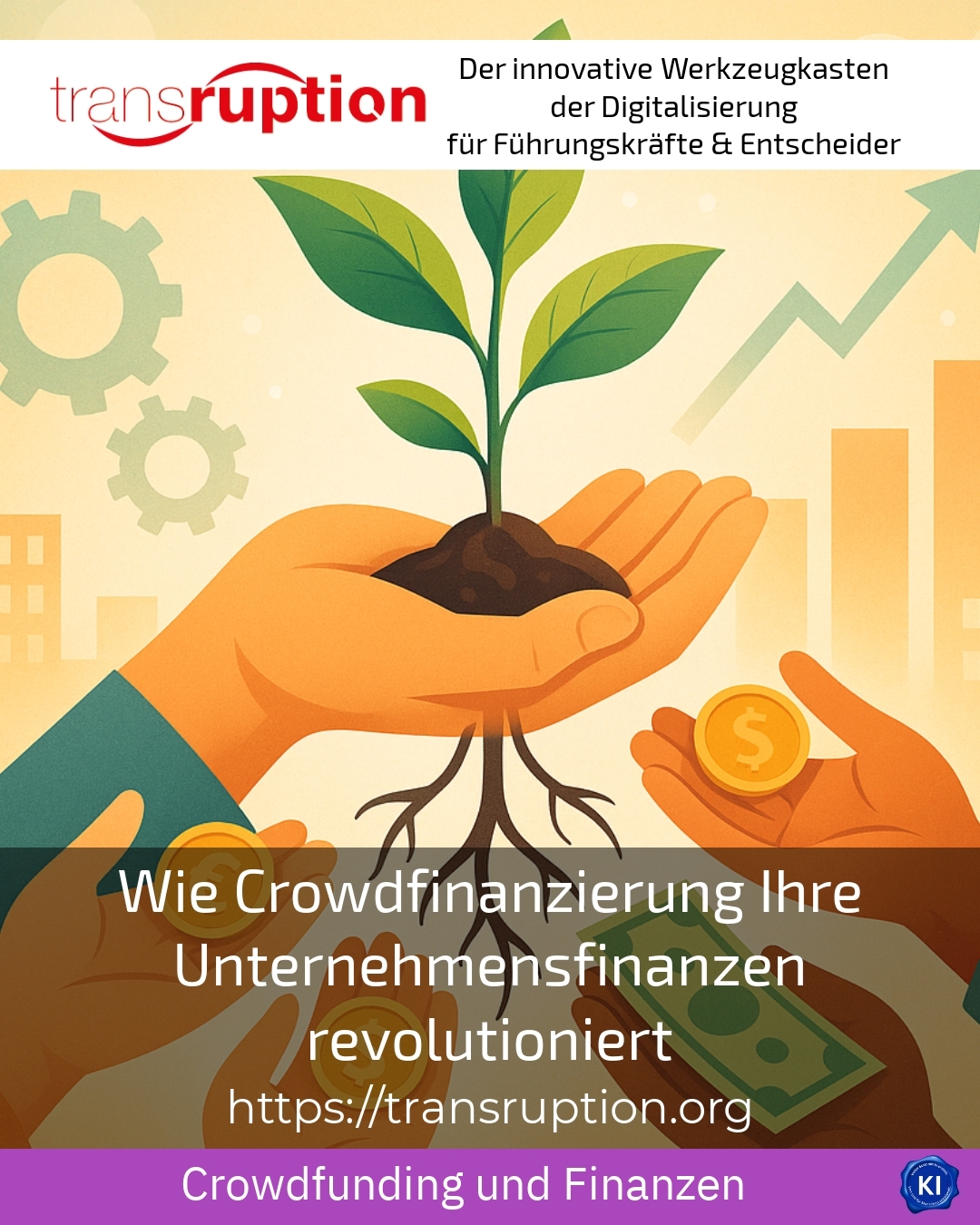Crowdfunding is changing the way companies organise their finances - and not just selectively, but as a sustainable trend. Raising capital through crowdfunding avoids traditional bank borrowing and instead engages directly with investors[1]. This offers innovative ways to realise projects, generate reach and retain a committed community. Crowdfunding is a flexible alternative that offers numerous opportunities, especially for founders, start-ups and SMEs.
Financing and growth through crowdfunding
The special thing about crowdfunding is that it creates access to liquid funds and at the same time enables an agile approach. While banks or venture capitalists often have rigid requirements, companies can use crowdfunding to target supporters - and thus not only gain capital, but also brand ambassadors[1]. A Berlin-based company from the sustainable consumer goods sector, for example, raised 150,000 euros within four weeks and gained over 1,200 customers, who also acted as multipliers in the social media. A craft business from Cologne also financed a new production hall through crowdinvesting - with over 80 private investors who were convinced by the transparency and potential returns. A Munich-based start-up in the field of renewable energies not only received money, but also valuable feedback on product development[1].
BEST PRACTICE at the customer (name hidden due to NDA contract) A client from the service sector launched a crowdfunding campaign to develop digital tools for sales. As early as the preparation phase, we worked together to develop a story that excited investors. With regular updates and a targeted approach to a niche, we succeeded in exceeding the funding target. The campaign not only raised capital, but also brought new contacts into the company.
In my practice, clients often report that they would not have the necessary flexibility for their innovation processes without crowdfunding. At the same time, they emphasise the importance of clear communication and transparency throughout the entire campaign. This means that preparation, storytelling and community involvement are key to success.
Industry examples: How crowdfunding works
The diversity of possible applications can be seen in various sectors. In the field of social entrepreneurship, crowdfunding makes it possible to realise social projects and tap into new target groups at the same time. In software development, teams use crowdfunding to test prototypes and directly incorporate feedback from the community. In the food sector, new product lines or locations are financed via crowdinvesting - and customers are given the opportunity to become shareholders.
BEST PRACTICE at the customer (name hidden due to NDA contract) A start-up initiative from the healthcare sector used crowdfunding to establish a digital platform for medical advice. The campaign targeted doctors and patients, secured funding, strengthened the network and increased visibility. The feedback from the crowd helped to further develop the product in a user-centred way.
BEST PRACTICE at the customer (name hidden due to NDA contract) A company from the construction industry gathered over 100 small investors to purchase a machine for resource-saving production. The investors were regularly informed about developments, which significantly increased trust and loyalty. The project was a complete success - not only financially, but also for the company's image.
The most important advantages at a glance
Crowdfunding enables companies to become less dependent on banks and increase their speed[1]. It involves stakeholders at an early stage and provides impetus for innovation and growth. In addition, the public campaign increases visibility, which in turn can open up new markets and partnerships. Companies that utilise crowdfunding report positive effects on brand communication and company value.
Practical tips for successful crowdfunding
The realisation of crowdfunding requires preparation and know-how. Firstly, the project should be clearly formulated and embedded in a convincing story. Choosing the right platform is crucial - it is worth comparing the conditions and target groups[5]. Communication should be open and continuous in order to create trust. Regular updates and a clearly defined reward model ensure loyalty.
BEST PRACTICE at the customer (name hidden due to NDA contract) A client from the mobility sector relied on crowdfunding to develop a sustainable transport concept. The campaign started with a strong visual presentation, a concise vision and clear milestones. The involvement of experts from the community and an open error culture strengthened trust and generated positive word of mouth. In the end, the funding target was not only achieved, but significantly exceeded.
In my coaching sessions, I provide companies with targeted support in the conception, implementation and communication of their crowdfunding. Together, we develop a customised strategy that is tailored to the respective requirements and target group. This makes it possible to reduce uncertainties and utilise the full potential of crowdfunding.
Be aware of challenges and risks
Crowdfunding also harbours risks that must be consciously managed. The funding target is not always achieved and the effort involved in the campaign should not be underestimated[5]. Dependence on the chosen platform and the public disclosure of business ideas are among the biggest challenges[3]. Anyone considering crowdfunding should therefore have clear communication channels, legal protection and realistic planning in mind.
My analysis
Crowdfunding is more than just a financing method - it is a modernisation driver for companies. Those who use it benefit from flexibility, visibility and direct feedback from the target group. The examples show that crowdfunding works in almost every industry if the communication is right and the community is valued. At the same time, it is important to recognise risks, provide professional support and deal openly with challenges.
Crowdfunding is therefore a valuable tool for anyone who wants to rethink their company and grow sustainably. The key lies in a clear strategy, open communication and a willingness to learn from the crowd.
Further links from the text above:
How crowdfunding can improve your business finances ... [1]
What are the advantages and disadvantages of crowdfunding? [3]
Crowdfunding and crowdinvesting - IHK Köln [5]
For more information and if you have any questions, please contact Contact us or read more blog posts on the topic TRANSRUPTION here.
















